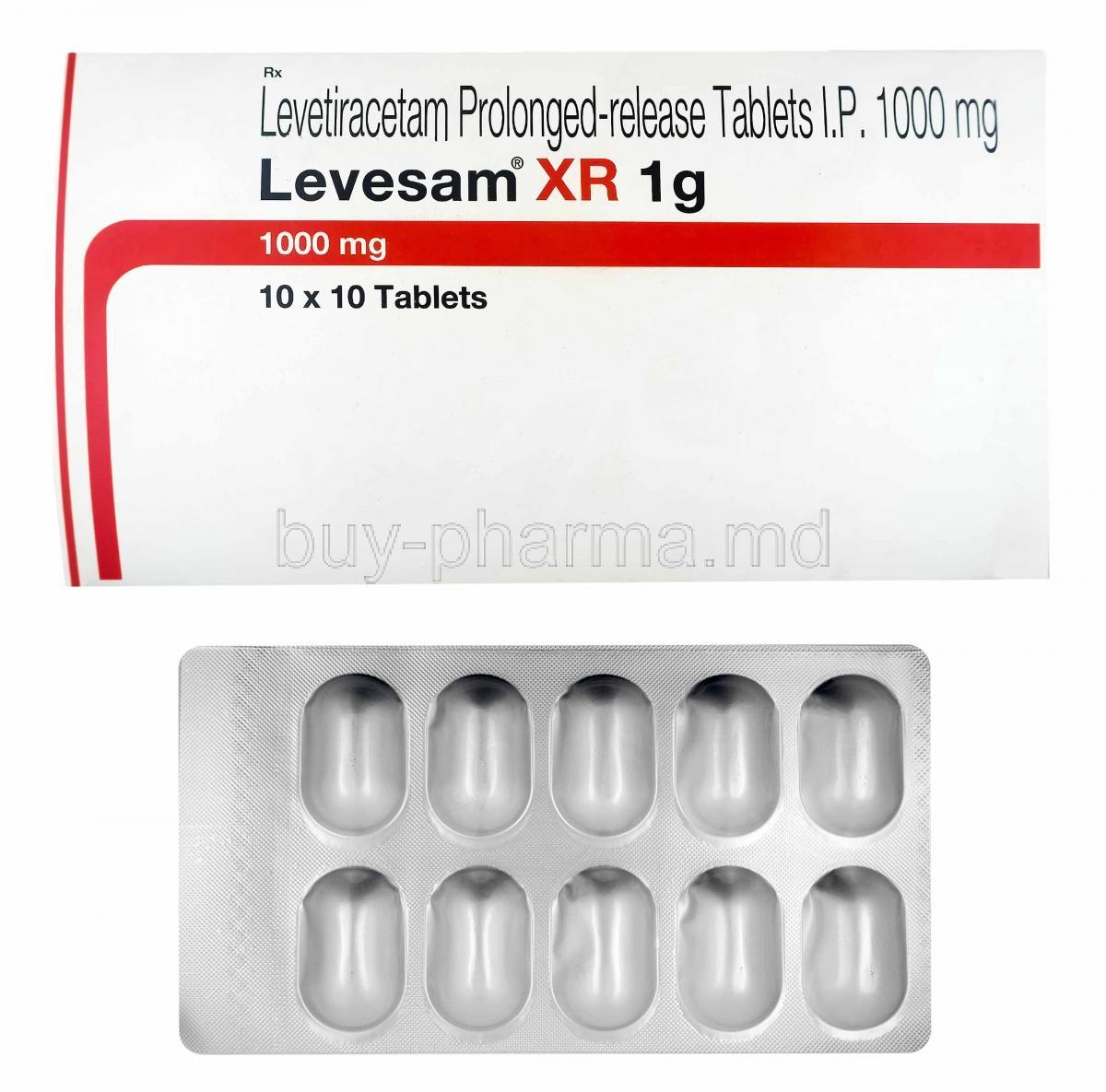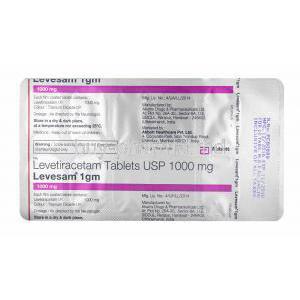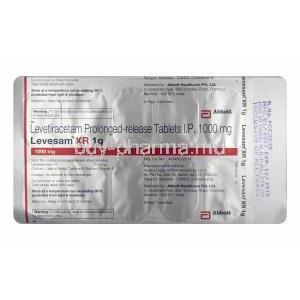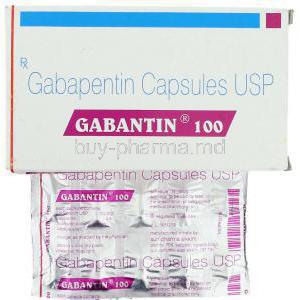Levesam, Levetiracetam
- Introduction
- Overview of Levesam (Levetiracetam)
- Composition
- Levetiracetam Mechanism of Action
- Uses
- Off-Label Uses
- Levetiracetam Dosage and Administration
- Administration in Specific Populations
- Overdosage
- Levetiracetam Side Effects
- Common Side Effects
- Serious Side Effects
- Levetiracetam Interactions
- Contraindications
- Levetiracetam Warnings and Precautions
- Careful Administration
- Important Precautions
- Storage and Handling Precautions
Introduction
Levetiracetam (also known as Levesam) is an increasingly important medication for treating seizure disorders. It's widely used because it's effective against various types of seizures and is generally well-tolerated by patients. This makes it a valuable alternative for those who haven't responded to older anti-seizure drugs. A major advantage of Levetiracetam is its simpler management, as it has fewer drug interactions and a generally better side effect profile compared to traditional anticonvulsants like phenytoin or carbamazepine.
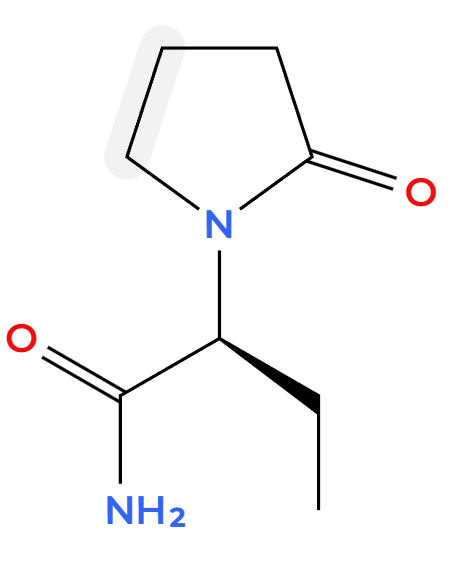
Overview of Levesam (Levetiracetam)
Levetiracetam is an anti-seizure drug (AED) in the pyrrolidone family that's highly favored by doctors. A key reason for its popularity is its quick effectiveness and the fact that its dose can be easily managed without complex monitoring. While primarily used as an add-on treatment, it's also approved in certain regions to be used alone (monotherapy)
History and Development of Levetiracetam
Developed by UCB Pharma in Belgium during the 1980s, Levetiracetam was initially created as a modification of the nootropic drug piracetam. However, researchers quickly shifted their focus when the compound showed unexpected antiepileptic properties. It was first approved for use in Europe in the year 2000, with U.S. FDA approval following shortly thereafter, and has since become a fundamental treatment for epilepsy in both adult and pediatric patients.
Approved Indications Worldwide
Levetiracetam is globally recognized as a reliable and versatile anti-seizure treatment, with approvals spanning continents. It is used for several different types of seizures, specifically: partial-onset seizures (which may or may not spread), myoclonic seizures associated with juvenile myoclonic epilepsy, and primary generalized tonic–clonic seizures.
Composition
Active Ingredient: Levetiracetam
The core ingredient, Levetiracetam, is a pyrrolidone derivative that is both water-soluble and readily absorbed when taken by mouth.
Available Strengths and Dosage Forms
The medication comes in various forms to suit different patient requirements:
- Film-coated tablets are available in several dosages, generally 250 mg, 500 mg, 750 mg, and 1000 mg.
- An oral solution is offered for children, older adults, or anyone needing flexible dosing.
- An intravenous (IV) injection is used in hospital settings for immediate treatment or when a patient cannot take the drug orally.
Inactive Ingredients and Excipients
Levetiracetam is formulated using various inactive ingredients (excipients) like microcrystalline cellulose, povidone, magnesium stearate, and polyethylene glycol. These components—including stabilizers and fillers—are essential because they maintain the tablet's structure, help the drug dissolve and be absorbed, and ensure its long-term stability.
Keppra vs Levetiracetam
Keppra is the original brand name developed by UCB, while Levetiracetam is the generic version of the same drug. Both medications contain the identical active ingredient and are considered therapeutically equivalent. Although they may differ in their inactive ingredients (excipients), cost, or name recognition, their clinical results are generally the same. Doctors commonly switch between them based on factors like patient choice, insurance coverage, or local stock.
Levetiracetam Mechanism of Action
How Levetiracetam Works in the Brain
Levetiracetam works differently from many other anti-epileptic drugs (AEDs) because it specifically targets and binds to synaptic vesicle protein 2A (SV2A). Since SV2A is vital for the release of neurotransmitters, this interaction effectively calms the excitability of neurons, thereby reducing the synchronized electrical bursts that cause seizures.

Impact on Neurotransmitters and Synaptic Vesicle Protein SV2A
By acting on SV2A, Levetiracetam regulates how neurotransmitters are packaged and released. The drug is able to reduce excessive firing of neurons without heavily interfering with normal brain signaling. This explains why it is both highly effective and has a milder impact on cognitive function. Furthermore, its specific targeting of SV2A contributes to its effectiveness across many different types of seizures.
Differences from Other Antiepileptic Drugs
Levetiracetam is distinct from older anti-epileptic drugs (AEDs), such as sodium channel blockers (like phenytoin or carbamazepine) or GABA modulators (like valproate or benzodiazepines). Instead of directly affecting ion channels or receptors, it works by modulating SV2A. This unique method offers several advantages:
- Fewer drug-drug interactions
- Minimal need for monitoring blood levels
- A generally safer profile
This makes Levetiracetam an especially valuable choice for patients who are taking multiple medications (polytherapy) or who have other health conditions that complicate the use of standard AEDs.
Uses
Levetiracetam is now an essential medication in epilepsy care, valued for its ability to treat a wide range of seizure types. It is considered a flexible anti-epileptic drug because doctors can quickly adjust its dose, and it has a generally favorable side effect profile. Its widespread use confirms its effectiveness and reliability across many different patient populations.
Primary Use in Epilepsy Management
Levetiracetam is primarily used to manage epileptic seizures and is often a first-choice treatment for doctors due to its broad effectiveness and low risk of drug interactions. It provides a beneficial option for patients who haven't found relief with older anticonvulsants. Because it works well for both children and adults, the drug is highly versatile and fits easily into individualized treatment plans.
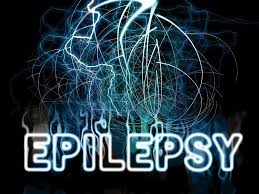
Treatment of Partial-Onset Seizures
Levetiracetam is most commonly used to treat partial-onset (or focal) seizures, and clinical results are highly positive. Studies show it provides a rapid reduction in seizure frequency and improves long-term quality of life. Compared to older medications, it also leads to lower rates of drug resistance. This efficacy is especially beneficial for patients who need to stop using previous therapies that risked liver damage (hepatotoxicity) or blood disorders (hematologic issues).
Management of Myoclonic Seizures in Juvenile Myoclonic Epilepsy
Levetiracetam is highly effective for managing Juvenile Myoclonic Epilepsy (JME), a condition typically starting in adolescence and marked by sudden, shock-like muscle jerks. The drug works by stabilizing neuronal activity, which significantly reduces both how often and how severe these unpredictable myoclonic jerks are. Consequently, adolescents on Levetiracetam often experience improved daily function, better academic performance, and fewer disruptions to their lives.
Adjunct Therapy for Generalized Tonic Clonic Seizures
Levetiracetam is frequently used as an add-on treatment for generalized tonic–clonic seizures, which are some of the most serious seizure types. When added to a patient's current therapy, it typically leads to a significant decrease in seizure recurrence and fewer trips to the emergency room. It especially improves stability for patients who previously didn't respond well to standard drugs. Furthermore, doctors appreciate its compatibility with other anti-epileptic drugs, which makes designing full seizure control plans much easier.
Dog Seizure Medication Levetiracetam
Levetiracetam is now an important drug in veterinary neurology, moving beyond human medicine. It is increasingly prescribed for canine epilepsy, particularly when standard treatments such as phenobarbital or potassium bromide are ineffective. The medication is valued in dogs for its safety and minimal processing by the liver, making it suitable for long-term use. Pet owners often report better seizure control, along with improvements in their dog's energy and behavior. Vets typically calculate the dose based on the dog's weight, with the easy-to-administer oral forms being the most popular choice.
Off-Label Uses
Although best known for treating epilepsy, Levetiracetam's pharmacological versatility has led to interest in various off-label uses. Researchers and doctors are exploring how to apply its benefits in areas where standard treatments aren't fully effective. While these studies show exciting possibilities, most of these applications are currently still considered experimental or supplementary.
Levetiracetam in Neuropathic Pain Management
Because neuropathic pain is often difficult to treat with standard pain relievers, Levetiracetam has been investigated as an alternative. Its ability to reduce excessive neuronal activity is thought to provide pain-relieving effects. Patients with conditions such as diabetic neuropathy or postherpetic neuralgia have reported different degrees of relief. The drug's mechanism of disrupting abnormal pain signals via its action on synaptic vesicle proteins makes it a promising option when traditional medications fail.
Use in Bipolar Disorder and Mood Stabilization
Managing bipolar disorder is challenging, especially when standard treatments like lithium or valproate fail. However, Levetiracetam is emerging as a potential mood stabilizer, with some reports indicating it can lessen manic episodes. Although extensive studies are still needed, doctors using it off-label have noted several key benefits: it may start working faster than some established mood stabilizers, it appears to carry a lower risk of metabolic side effects, and it is generally well-tolerated when used alongside other medications.

Role in Anxiety and Psychiatric Conditions
Levetiracetam is being investigated for psychiatric disorders marked by high arousal and excitability. Its specific method of modulating neuronal transmission and influencing inhibitory brain circuits suggests it may have anxiety-reducing (anxiolytic) effects. Doctors have observed a decrease in anxiety severity in some patients, particularly those who experience problems with sedation or dependency from standard anxiety medications. While its effectiveness varies, its unique neurochemical action makes it a distinct alternative to treatments like benzodiazepines or SSRIs.
Potential in Migraine Prophylaxis
For patients who need new options for migraine prevention, recent, though limited, evidence suggests Levetiracetam may help reduce both the frequency and severity of headaches. By calming the brain's excitability and adjusting neurotransmitter release, the drug may stop the chain reaction that triggers migraine auras and pain. This makes it a potential alternative for individuals who have not found relief with standard preventative medications like beta-blockers or topiramate.
Use in Neurodegenerative Conditions (Alzheimer's, Parkinson's)
Due to the therapeutic challenges of neurodegenerative diseases, research has been inspired by Levetiracetam's action on the SV2A protein to study its potential neuroprotective effects. For example, in Alzheimer’s disease, the drug may help preserve cognitive function by reducing excessive activity in the hippocampus. In Parkinson’s disease, early results hint that it could help manage the abnormal movements (dyskinesias) caused by levodopa. While these are not yet standard treatments, they represent promising areas for future research.
Pediatric Off-Label Applications
Pediatric neurology often needs creative treatment strategies, particularly when standard drugs might negatively affect a child's development. Levetiracetam has therefore been used off-label for conditions like febrile seizures, developmental epileptic encephalopathies, and persistent infantile spasms.
It is favored for these uses because of its:
- Good safety profile and minimal processing by the liver.
- Ease of use, especially its available liquid forms.
- Potential cognitive advantages compared to older anti-epileptic drugs.
While doctors and parents see Levetiracetam as a practical choice for managing complicated childhood seizure syndromes, its use outside of approved indications must be closely monitored.
Levetiracetam Dosage and Administration
Levetiracetam is administered using structured plans that ensure both safety and effectiveness. The drug's stable behavior in the body (pharmacokinetics) results in predictable drug levels in the blood, allowing doctors to easily create simple dosing schedules for various patients. It is vital that patients follow these plans exactly to maintain seizure control and avoid breakthrough seizures.
Standard Adult Dosing Guidelines
For adults, treatment typically begins with 500 mg taken twice daily. Depending on how the patient responds, the dose can be increased by 500 mg every two weeks, up to a usual maximum of 3000 mg per day. This gradual adjustment, known as titration, ensures the patient stabilizes slowly without disrupting their neurological system.
Pediatric Dosing by Age and Weight
Dosing for children must be precise and is typically calculated based on their body weight. Treatment usually begins with 20 mg/kg per day, divided into two doses. This dosage is then slowly adjusted, resulting in maintenance doses that range from 20 to 60 mg/kg per day. Close monitoring is critical because the child's growth, metabolic changes, and developmental stage all influence how they respond to the drug.
Intravenous Administration in Acute Settings
When patients can't take the drug orally, intravenous (IV) infusion offers a rapid alternative. In emergencies, such as treating status epilepticus or preventing seizures during surgery, Levetiracetam is infused over about 15 minutes. The IV dose is the same as the oral dose, ensuring consistent therapeutic levels. Hospital procedures require close monitoring of the patient's vital signs during the infusion.
Titration Schedules for Seizure Control
Titration (gradually adjusting the dose) is vital for achieving the best seizure control with the fewest side effects. Doctors usually increase the treatment step-by-step every two to four weeks. During this process, they must:
- Evaluate the frequency and intensity of seizures.
- Monitor for side effects like drowsiness or changes in behavior.
- Ensure proper balance with any other medications the patient is taking.
This careful approach underscores the necessity of personalized care in effective epilepsy management.
Adjustments for Renal Impairment
Since Levetiracetam is primarily removed from the body by the kidneys without being changed, doctors must adjust the dose for patients with kidney problems (renal impairment). The main guide for this adjustment is the patient's creatinine clearance. Those with moderate to severe kidney function loss require lower doses. Additionally, patients on dialysis may need a supplemental dose after the procedure. If these adjustments are not made, the drug could build up in the body and cause toxicity.
Missed Dose Instructions
If you miss a dose, take it immediately unless it's almost time for your next scheduled dose. Never double the dose, as this won't improve seizure control but will increase the risk of side effects. Patients must prioritize consistent dosing, since taking the medication irregularly makes it much more likely that they will experience breakthrough seizures.
Levetiracetam Dosage Pediatric
Precise dosing is essential when treating children. Treatment typically begins with 10 mg/kg taken twice daily, followed by gradual increases. For children under four years old, liquid formulations are used to ensure accurate dosing. Older children and teens usually switch to tablets once they are heavy enough and can swallow them safely. While long-term studies show that pediatric patients generally tolerate the drug well, they may experience irritability and behavioral changes more frequently than adults do.
Administration in Specific Populations
Elderly Patients: Dose Adjustments and Monitoring
Because older individuals often have reduced kidney function, it's crucial to adjust their Levetiracetam dosage carefully. Doctors should regularly check both their kidney function and their cognitive status. Since the elderly may be more sensitive to sedating effects, it's better to increase the dose slowly rather than using rapid titration.
Pregnant Women: Safety Data and Risks
Managing seizures during pregnancy is especially complex. Levetiracetam is preferred over older anticonvulsants because it has better safety data, though the risk of birth defects (teratogenicity) still exists. Since uncontrolled seizures pose serious risks to both the mother and the fetus, achieving effective seizure control is critical. Doctors typically address this by using the lowest effective dose and conducting regular monitoring.

Nursing Mothers: Excretion in Breast Milk
Levetiracetam is transferred into breast milk in detectable quantities. While there have been no consistent reports of serious side effects in nursing infants, close observation is necessary. Mothers should watch for signs in the infant such as excessive sleepiness, difficulty feeding, or developmental concerns. The decision to continue breastfeeding should always be made jointly between the mother and her doctor.
Children and Adolescents: Dosing and Safety Profile
Children and teenagers benefit from dosing based on their body weight, which balances the drug's effectiveness with long-term safety. Clinical studies confirm that the medication significantly reduces seizures without major impacts on growth or cognitive abilities. However, because behavioral side effects like irritability, mood swings, or hyperactivity are more common in younger patients, they require increased monitoring.
Overdosage
Symptoms of Levetiracetam Overdose
An overdose of Levetiracetam can manifest as extreme sleepiness, agitation, trouble breathing, or unconsciousness. Patients often experience neurological symptoms like confusion and dizziness. In the most severe cases, an overdose could lead to coma or cardiovascular failure.
Emergency Management Strategies
Managing an overdose requires immediate supportive care. If the drug was ingested recently, doctors may perform a gastric lavage (stomach pumping). Key interventions include administering IV fluids, managing the patient's airway, and continuously monitoring their heart and breathing. Since there is no specific antidote, rapid intervention is absolutely essential.
Role of Dialysis in Overdose Cases
Because Levetiracetam has low protein binding and is cleared by the kidneys, hemodialysis is an effective way to remove significant amounts of the drug from the blood. Dialysis is particularly beneficial for patients with kidney failure or those with severe toxicity that cannot be managed with standard care.
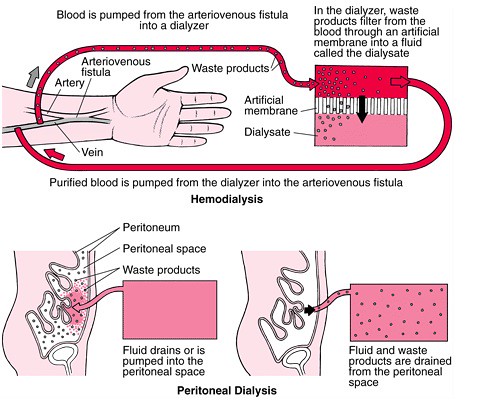
Levetiracetam Withdrawal Symptoms
It's essential to manage Levetiracetam withdrawal carefully, as stopping the drug abruptly can cause seizures to return or become worse. Patients may experience symptoms like increased anxiety, dizziness, irritability, and a sharp increase in seizure frequency. To give the central nervous system time to adjust slowly and minimize the risk of destabilization, doctors strongly recommend gradually tapering the dosage over several weeks.
Levetiracetam Side Effects
Levetiracetam is generally well-tolerated, but its side effect profile is unique due to its impact on the central nervous system and how it's cleared by the kidneys. Most adverse reactions are dose-dependent, often temporary, and tend to lessen when the dosage is carefully increased (titration). Closely monitoring patients when starting the drug and increasing the dose helps ensure good results and encourages them to stick to their treatment plan.
General Overview of Side Effect Profile
Clinical practice shows that side effects are most often related to sleepiness (somnolence) and changes in behavior (neurobehavioral events). Compared to older anti-epileptic drugs that affect enzymes, the overall side effect profile is relatively mild and involves minimal drug interactions.
Common side effects include fatigue, dizziness, and irritability. Less frequent issues include headaches, stomach problems, and sleep disturbances. Though uncommon, patients should be aware of more notable effects like mood swings, skin rashes, and changes in blood counts. Patient education is vital to ease concerns and encourage the quick reporting of any new or worsening symptoms.
Short-Term vs Long-Term Adverse Reactions
Side effects can be categorized by when they appear. Short-term reactions, such as drowsiness, dizziness, nausea, and temporary lack of coordination (ataxia), typically occur within the first few weeks as the central nervous system adjusts to the drug. Long-term reactions are less frequent, sometimes appearing as persistent irritability, depressive symptoms, or changes in weight, and may be linked to prolonged use or stress. It is recommended that patients undergo regular reassessment, particularly after dose changes or major life events.
Risks of Abrupt Discontinuation
Suddenly stopping Levetiracetam can cause a rebound in seizure activity and lead to neuropsychiatric problems. To minimize this risk and allow the body to adjust, gradual withdrawal is necessary. This slow tapering is especially crucial when the patient is taking multiple drugs (polytherapy), during surgery (perioperative phases), or when planning for pregnancy.
Potential side effects of abrupt withdrawal include increased seizure frequency, agitation, and insomnia. The recommended approach is to reduce the dose slowly over several weeks.
Levetiracetam Adverse Effects
Side effects from Levetiracetam can affect the nervous system, mental health, digestive system, and blood. Although most effects are mild, they can still noticeably impact a patient's well-being. To maintain the success of the treatment, it is important to identify these issues early and make personalized adjustments to the regimen.
Common Side Effects
Drowsiness and Fatigue
Drowsiness (somnolence) and lack of energy (asthenia) are among the most frequent side effects, but they usually improve once the body adjusts or if the daily dose is split. You can often relieve daytime sleepiness by adjusting the dose to be taken at night and practicing better sleep habits. Since these effects usually appear early in therapy, they can be managed by using a slower titration schedule and checking for other medications the patient is taking that might also cause sedation.
Dizziness and Coordination Issues
Patients may experience dizziness, lightheadedness, and slight loss of coordination (mild ataxia) when their dose is increased. These effects usually go away on their own, but they can interfere with driving and job safety. Older adults should be advised on fall prevention. If these symptoms are persistent or pose a safety risk, doctors should consider reducing the dose. It is also important to check for dehydration, low blood pressure, and potential drug interactions.

Behavioral Changes and Mood Swings
Neurobehavioral changes are common side effects, including irritability, agitation, and mood swings. A small minority of patients may experience noticeable sadness or discomfort (dysphoria). It's helpful to screen for any prior psychiatric history to increase awareness, and caregivers should be urged to report even slight behavioral shifts. These effects can sometimes be managed with non-drug approaches like improving sleep and managing stress, or by using drug options such as adjusting the dose or switching medications if the effects are severe.
Gastrointestinal Disturbances
You may experience nausea, indigestion (dyspepsia), and a reduced appetite, particularly when you first start taking the medication. Taking your doses with food often helps alleviate these symptoms. Usually, staying well-hydrated and making small dietary adjustments is all that's needed to manage them. Less common issues include diarrhea and abdominal pain. If symptoms persist, it's important to consider other potential causes with your doctor.
Serious Side Effects
Severe Psychiatric Symptoms (Depression, Aggression, Suicidal Ideation)
Although infrequent, serious psychiatric side effects demand immediate attention. If a patient experiences new or worsening depression, aggression, or thoughts of self-harm, an urgent evaluation is required. Collaborating with mental health services helps ensure patient safety and seamless care.
Risk factors include a prior mood disorder or a rapid increase in dosage. Necessary actions include reducing or stopping the dose, and seeking emergency care if suicidal thoughts occur.
Allergic Reactions and Skin Rashes
Hypersensitivity reactions vary from maculopapular rashes to infrequent but severe cutaneous adverse reactions. Any rapidly expanding rash, involvement of mucosal surfaces, or systemic symptoms necessitates immediate discontinuation and medical evaluation.
- Warning signs: fever, facial swelling, mucosal erosions
- Management: stop treatment, supportive care, refer to dermatology
Hematologic Abnormalities
There have been rare, isolated reports of low white blood cell counts (leukopenia, neutropenia) or low platelet counts (thrombocytopenia). In most instances, these blood count issues reverse after the dose is lowered or the medication is stopped. For patients who are considered at risk, doctors should check blood counts at baseline (before starting treatment) and again if symptoms—like unusual bruising, infections, or fatigue—appear. If problems arise, the next steps include a complete blood count and a re-evaluation of the treatment's risks and benefits.
Risk of Stevens Johnson Syndrome
Stevens–Johnson syndrome (SJS) is an extremely rare but potentially life-threatening condition. Early signs include a fever, general discomfort (malaise), and irritated eyes, followed by the emergence of blistering rashes. If this occurs, the drug must be stopped immediately, and the patient needs specialist medical treatment. Patients should be educated to seek medical attention for any painful, blistering rash, and this reaction must be officially documented as a reason not to use Levetiracetam again (contraindication for rechallenge).

Levetiracetam Side Effects in Adults
Adults frequently report side effects such as fatigue, dizziness, headaches, and irritability. For those whose jobs are physically demanding or involve safety risks, these effects can be intensified. To reduce these risks, doctors can make careful dosage adjustments and conduct regular monitoring. Specifically, they should monitor the patient's sleep quality, mood, and reaction time, and may adjust the dose timing to better fit the patient's work schedule.
Levetiracetam Dental Side Effects
While uncommon, oral and dental side effects have been noted. Dry mouth (xerostomia) can raise the risk of cavities and cause discomfort to the mouth lining. In some sensitive people, there have been anecdotal reports of teeth grinding (bruxism) and jaw tension.
These issues can be managed by using saliva substitutes, fluoride rinses, and getting regular dental checkups. For grinding at night, mouth guards are a helpful behavioral strategy.
Levetiracetam Interactions
Levetiracetam is known for having a relatively low risk of drug interactions because it is not significantly processed by the liver and does not strongly bind to proteins. Nonetheless, clinically important interactions can still occur, especially when patients are taking multiple medications (polytherapy). To maintain the drug's effectiveness and prevent unexpected side effects, doctors must thoroughly check all concurrent medications, lifestyle factors, and supplements (nutraceuticals).
Drug-Drug Interactions with Other Antiepileptic Drugs
It's common for Levetiracetam to be taken alongside other anti-epileptic drugs (AEDs). Most AEDs that increase enzyme activity don't significantly change the amount of Levetiracetam in the body, but vigilance is still important.
- Carbamazepine, phenytoin, and phenobarbital usually have minimal effect on Levetiracetam levels, but watch for increased cognitive side effects.
- The interaction with Valproate is typically neutral, but monitor for overlapping sleepiness or mood swings.
- Topiramate and lamotrigine have limited metabolic interaction, but patients may experience cumulative dizziness, sleepiness, or mood changes.
Because Levetiracetam acts predictably (linear kinetics), doctors usually make adjustments based on the patient's symptoms rather than relying on blood level monitoring. However, when changing the dose, they must consider all medications the patient is taking to minimize the overall burden of using multiple drugs.
Interaction with Alcohol and Sedatives
Drugs that depress the central nervous system (CNS) will amplify the sedating and mind-dulling effects of Levetiracetam. For example, alcohol significantly worsens dizziness, slows down reaction time, and increases poor judgment, especially when the dose is being raised or is already high.
It is recommended that patients:
- Limit or completely avoid alcohol.
- Avoid combining Levetiracetam with medications like opioids, strong antihistamines, or benzodiazepines whenever possible.
- Regularly review the risks related to driving or job performance with their doctor.
Effects on Oral Contraceptives
Levetiracetam is unlikely to interfere with hormonal contraceptives because it minimally affects the cytochrome P450 enzyme systems. If a patient experiences breakthrough bleeding or an irregular cycle, it's usually due to their own body's variability, not a drug interaction.
Therefore, no routine dose changes are needed for contraceptives. It remains crucial, however, to stress the importance of strict adherence to the contraceptive schedule, especially when Levetiracetam doses are being changed or if the patient experiences a stomach illness.
Food and Herbal Supplement Considerations
Food has very little effect on how well your body absorbs Levetiracetam, so you can take it with or without meals.
However, you should be careful with herbal supplements:
- St. John’s wort should be avoided unless absolutely necessary, as it might destabilize your mood and cause problems when taken with other drugs.
- Kava, valerian, and cannabidiol (CBD) can cause extra sedation or sleepiness, so you must be monitored closely for signs of drowsiness or cognitive issues.
- High-dose caffeine or energy drinks may worsen anxiety or disturb your sleep, which can reveal behavioral side effects.

Contraindications
Levetiracetam and Alcohol
While it's not strictly forbidden to drink alcohol while taking Levetiracetam, you must be extremely careful. Even a small amount of alcohol can increase dizziness, impair coordination, and cause mood swings. For patients who have recently had a seizure, are increasing their dose, or have mental health issues, abstinence is often the best advice.
It's important to discuss safe consumption limits and strategies to prevent heavy drinking. The risks of using alcohol should be reassessed whenever your treatment changes or you go through major life transitions.
Absolute Contraindications to Use
Absolute contraindications for Levetiracetam are uncommon, which speaks to the drug's good metabolic profile. The only major reason a patient cannot take it is a known allergy to Levetiracetam or any of the substances in its formulation. A severe hypersensitivity reaction in the past prevents the patient from ever taking the drug again.
Known Hypersensitivity to Levetiracetam or Excipients
Patients who have previously had an immediate or delayed allergic reaction to Levetiracetam—like swelling (angioedema), a severe rash, or anaphylaxis-like symptoms—must avoid this drug entirely. Since doctors can't be sure about potential cross-reactivity with other related compounds (pyrrolidone derivatives), it's best to choose a completely different antiseizure medication.
Levetiracetam Warnings and Precautions
Even though Levetiracetam is considered "clean" because it has few drug interactions, it still requires careful management. The primary concerns are potential behavioral side effects, kidney-related issues, and problems during withdrawal. These risks can be reduced through proactive patient counseling and regular follow-up assessments.
Risk of Behavioral and Psychiatric Adverse Events
Behavioral side effects—such as irritability, agitation, and mood swings—are possible, especially when treatment is started or the dose is changed. A smaller number of patients may also experience depression or a general feeling of unhappiness (dysphoria).
To manage this risk, doctors should screen patients for any history of mood disorders or substance use. It is also vital to inform family members and caregivers so they can watch for and report subtle changes in the patient's personality. If these symptoms become severe, the best approach is to consider reducing the dosage or switching to a different medication.
Caution in Patients with Renal Impairment
Because Levetiracetam is cleared mainly by the kidneys in its original form, doctors must adjust the dose according to the patient's estimated creatinine clearance. For people with advanced kidney disease or those on dialysis, a personalized schedule—often including an extra dose after dialysis—is necessary to prevent the drug from building up and causing neurotoxicity. Doctors should obtain baseline and periodic tests of kidney function and make prompt adjustments if the patient experiences dehydration or other illness.
Suicidal Ideation and Monitoring Requirements
All antiepileptic medications carry a warning about the potential for suicidal thoughts or behavior. Although the risk is generally low, close monitoring is absolutely necessary. Doctors should start regularly checking the patient's mood and assessing suicidality during the first few months of treatment and whenever the dose is changed. Any urgent self-harm thoughts or behaviors must be escalated to emergency care immediately.

Need for Gradual Withdrawal to Avoid Seizure Rebound
Suddenly stopping this medication can lead to rebound seizures and mental/behavioral instability. To avoid destabilization and give the brain time to recover its balance, the dose must be gradually reduced over several weeks.
This process involves implementing slow reductions, typically every one to two weeks. It requires careful coordination during times like surgery, pregnancy planning, or when switching to other medications.
Careful Administration
While Levetiracetam is easier to manage than older drugs due to its simple pharmacological profile, it still requires careful supervision to ensure it's both safe and effective. Doctors must balance the goal of treatment with the need to minimize side effects by conducting systematic monitoring and intervening promptly when necessary.
Monitoring Requirements During Therapy
For safe long-term care, patients need continuous monitoring. Regular check-ups allow doctors to catch early signs of behavioral or psychiatric changes, blood count issues, or kidney strain. Clinical visits shouldn't just focus on seizure control, but must also address mental health, as subtle psychiatric symptoms can often be the first sign of a more serious problem developing.
Periodic Blood Tests and Liver/Kidney Function Assessment
Since Levetiracetam is primarily removed from the body by the kidneys in its original form, a patient's kidney function is a critical consideration for dosing. Routine measurements of serum creatinine and the estimated glomerular filtration rate (eGFR) are used to guide any necessary dose changes. Although liver damage (hepatotoxicity) is uncommon, testing liver function provides reassurance for patients who already have liver disease or are taking several medications.
Doctors should perform:
- Baseline kidney and liver tests before starting treatment.
- Tests regularly for patients considered high-risk.
- Prompt testing if a patient shows unexpected fatigue, bruising, or yellowing of the skin (jaundice).
Clinical Situations Requiring Dose Modification
Dose adjustments for Levetiracetam are required in various clinical situations. Conditions like acute illness, dehydration, or new kidney problems can cause drug levels in the blood to rise. Patients who are elderly, those taking many medications, or those with existing psychiatric disorders often need lower starting doses or a slower, more gradual increase (titration) to reduce the risk of complications.
Important Precautions
Driving and Operating Machinery
Since Levetiracetam can cause dizziness, drowsiness, and slowed reaction times, patients should be cautious when operating heavy machinery or driving. The risk of these side effects is greatest when you first start the medication or after the dose is changed. The safest approach is to avoid high-risk activities until your body adjusts to the drug and you know how it affects you.
Alcohol Use While on Levetiracetam
Alcohol can amplify sedative and behavioral side effects, raising the chances of impaired judgment and seizure breakthroughs. Even a small amount can destabilize patients during dose adjustments. Abstaining or strictly limiting intake is usually recommended for maximum safety.
Sudden Discontinuation Risks
Abrupt discontinuation of Levetiracetam increases the likelihood of rebound seizures, with some potentially being more intense than the baseline. Neurological instability and mood changes can also occur. Gradual tapering under supervision continues to be the recommended precaution.
Patient and Caregiver Education
Informed participation is crucial for successful treatment. Patients and caregivers need to be aware of early signs of mood changes, the significance of adhering to prescribed doses, and when to seek immediate medical attention. Effective communication enables families to work together in sustaining stability.
Storage and Handling Precautions
Recommended Storage Conditions for Tablets, Oral Solution, and Injection
Proper storage maintains potency and prevents contamination. Tablets need to be stored at a controlled room temperature, shielded from moisture and direct sunlight. Oral solutions require secure sealing and should be kept at specified temperatures to prevent microbial growth. Injectable formulations must be refrigerated until needed, with careful aseptic handling in clinical settings.
Shelf Life and Stability Information
Each dosage form has its own stability parameters. Tablets can maintain potency for several years when sealed appropriately. Oral solutions typically have shorter shelf lives after opening and should be used within the timeframe indicated on the packaging. Injectable vials remain stable until expiration when stored properly, but once punctured, they must be used immediately.
Safe Handling of Levetiracetam in Hospital and Home Settings
Healthcare providers adhere to aseptic techniques while preparing intravenous doses, guaranteeing both sterility and accurate measurement. In home environments, caregivers should refrain from crushing or modifying formulations unless instructed, as this may impact absorption. Child-resistant containers, along with clear labeling, help minimize the chance of accidental ingestion.

Disposal Instructions for Unused Medication
Unused or expired medication should never be thrown away in household waste or wastewater. Pharmacies and healthcare facilities offer specific return programs for secure disposal. Patients need to be advised to make use of these systems, safeguarding both community health and the environment.
Levesam, Levetiracetam FAQ
- What are the long-term side effects of Levetiracetam?
- What are the major side effects of Levetiracetam?
- Another name for Levetiracetam?
- Does Levetiracetam cause weight gain?
- Is Levetiracetam the same as Keppra?
- Can you crush Levetiracetam?
- What are the side effects of Levetiracetam?
- What is Levetiracetam used for in dogs?
- Does Levetiracetam make you sleepy?
- Is Keppra the same as Levetiracetam?
- Can Levetiracetam cause seizures?
- Can you drink alcohol while taking Levetiracetam?
- What is Levetiracetam ER?
- Does Levetiracetam cause hair loss?
- How long does Levetiracetam take to work?
- How long does Levetiracetam stay in your system?
- What is another name for Levetiracetam?
- How long does Levetiracetam take to work in dogs?
- Does Levetiracetam cause constipation?
- Can Levetiracetam be cut in half?
- Does Levetiracetam cause memory loss?
- Are Levetiracetam tablets scored?
- Are Levetiracetam and Lamotrigine the same?
- Levetiracetam are there different kinds?
- What are Levetiracetam tablets used for?
- Are all Levetiracetam the same?
- Why are Levetiracetam levels checked?
- What are Levetiracetam side effects?
- Are Levipil and Levetiracetam same?
- Can Levetiracetam be crushed?
- Can Levetiracetam cause weight gain?
- Can Levetiracetam cause constipation?
- Can Levetiracetam kill you?
- Can Levetiracetam cause depression?
- Can Levetiracetam cause diarrhea?
- Can Levetiracetam be cut in half?
- Can Levetiracetam cause hair loss?
- Can Levetiracetam cause insomnia?
- Can Levetiracetam tablets be crushed?
- Can Levetiracetam cause low blood pressure?
- Can Levetiracetam make you sleepy?
- Can Levetiracetam cause memory loss?
- Can Levetiracetam cause psychosis?
- Can Levetiracetam be abused?
- How Levetiracetam works?
- Levetiracetam how long does it take to work?
- Levetiracetam how long to work?
- Levetiracetam how to take?
- Levetiracetam how long to take?
- Levetiracetam how many times a day?
- Levetiracetam how long does it last?
- Levetiracetam how many hours apart?
- Levetiracetam how long to take effect?
- Levetiracetam how often to take?
- What Levetiracetam is used for?
- Levetiracetam what to avoid?
- Levetiracetam what type of drug?
- Levetiracetam what to monitor?
- Levetiracetam what class of drug?
- When did Levetiracetam come out?
- When was Levetiracetam approved by the FDA?
- When does Levetiracetam start working?
- When was Levetiracetam invented?
- When should Levetiracetam levels be checked?
- When was Levetiracetam made?
- When does Levetiracetam peak?
- Levetiracetam where to buy?
- Levetiracetam where is it made?
- Where is Levetiracetam metabolized?
- Where is Levetiracetam absorbed?
- Where does Levetiracetam come from?
- Where to buy Levetiracetam for dogs?
- Levetiracetam which class of drug?
- Levetiracetam which type of drug?
- Levetiracetam which generation?
- Why is Levetiracetam prescribed?
- Which is better Levetiracetam and Brivaracetam?
- Why is Levetiracetam preferred?
- Why is Levetiracetam preferred over Phenytoin?
- Why is Levetiracetam given for stroke patient?
- Will Levetiracetam hurt my dog?
- Will Levetiracetam stop seizures?
What are the long-term side effects of Levetiracetam?
Long-term Levetiracetam use is commonly associated with mood changes (such as irritability, depression, or anxiety) and cognitive difficulties (including problems with memory and concentration). Some users may also continue to experience fatigue and disrupted sleep. Less commonly, it might lead to reduced bone density and vitamin D deficiency. In rare cases, severe behavioral side effects may require patients to discontinue the medication.
What are the major side effects of Levetiracetam?
Major side effects of the medication encompass dizziness, drowsiness, fatigue, irritability, mood swings, and coordination problems. Patients should also be aware of potential psychiatric effects, which include depression, aggression, and suicidal ideation. Less commonly, but seriously, the drug may trigger severe skin reactions or blood disorders.
Another name for Levetiracetam?
Levetiracetam is widely recognized under the brand name Keppra, and its extended-release versions might be referred to as Keppra XR.
Does Levetiracetam cause weight gain?
Levetiracetam is not significantly associated with weight gain, and for many patients, their weight stays stable. Nonetheless, individual reactions differ, and instances of both weight gain and weight loss have been noted.
Is Levetiracetam the same as Keppra?
Yes, Keppra is the brand name, while Levetiracetam is the generic version of the same medication.
Can you crush Levetiracetam?
Immediate-release Levetiracetam tablets can usually be crushed if necessary, but extended-release versions should never be crushed, as this changes the way the drug is released. Always check with a pharmacist before modifying tablets.
What are the side effects of Levetiracetam?
Common side effects may involve dizziness, headaches, sleepiness, irritability, a reduced appetite, and weakness. Some patients might experience psychiatric symptoms like mood swings, anxiety, or depression.
What is Levetiracetam used for in dogs?
In veterinary medicine, Levetiracetam is mainly prescribed for dogs to help control seizures, particularly when other anti-seizure medications are inadequate or lead to unwanted side effects.
Does Levetiracetam make you sleepy?
Yes, drowsiness or fatigue is among the most commonly reported side effects, particularly in the initial weeks of treatment or following dose adjustments.
Is Keppra the same as Levetiracetam?
Yes, Keppra is the branded version, while Levetiracetam serves as the generic counterpart.
Can Levetiracetam cause seizures?
Although uncommon, suddenly stopping Levetiracetam can lead to withdrawal seizures. Insufficient dosing or variations in individual response might also result in ineffective seizure control.
Can you drink alcohol while taking Levetiracetam?
Alcohol should generally be avoided since it can exacerbate dizziness, drowsiness, and impaired coordination, and may interfere with seizure management.
What is Levetiracetam ER?
Levetiracetam ER is the extended-release version of the medication, formulated for once-daily dosing to ensure stable blood levels.
Does Levetiracetam cause hair loss?
Hair loss is not a typical side effect, but there are some isolated reports. If it does happen, it is generally reversible after discontinuing or modifying the medication.
How long does Levetiracetam take to work?
Levetiracetam generally starts to take effect within hours to days after the initial dose, but achieving complete seizure control may need dose adjustments over several weeks.
How long does Levetiracetam stay in your system?
The half-life of Levetiracetam ranges from 6 to 8 hours in adults, which means it typically clears from the body within 2 to 3 days following the last dose.
What is another name for Levetiracetam?
Another name for it is Keppra, and in certain areas, brand variations such as Keppra XR or Spritam might be available.
How long does Levetiracetam take to work in dogs?
In dogs, Levetiracetam may start to decrease seizure activity within hours of administration, although achieving stable seizure control can take several days.
Does Levetiracetam cause constipation?
Constipation isn't a typical side effect, but gastrointestinal issues like nausea or a reduced appetite may occasionally happen.
Can Levetiracetam be cut in half?
Immediate-release Levetiracetam tablets can typically be split if they are scored, but extended-release tablets must not be cut, as this interferes with the controlled release mechanism.
Does Levetiracetam cause memory loss?
Levetiracetam can occasionally lead to cognitive side effects such as memory issues, difficulty concentrating, or confusion, especially when taken at higher doses or by more sensitive individuals. Fortunately, these effects are typically reversible through dosage adjustments or discontinuation.
Are Levetiracetam tablets scored?
Many immediate-release Levetiracetam tablets feature a score line, enabling them to be split if needed. Conversely, extended-release tablets are typically not scored and should remain whole.
Are Levetiracetam and Lamotrigine the same?
No, Levetiracetam and Lamotrigine are separate antiepileptic medications. They feature unique mechanisms of action, side effect profiles, and dosing considerations.
Levetiracetam are there different kinds?
Yes, Levetiracetam comes in immediate-release tablets, extended-release tablets, oral solution, and injectable forms. The selection depends on clinical needs and patient preferences.
What are Levetiracetam tablets used for?
Levetiracetam tablets are mainly prescribed for managing partial-onset seizures, generalized tonic-clonic seizures, and myoclonic seizures associated with epilepsy. They aid in decreasing both the frequency and intensity of seizures.
Are all Levetiracetam the same?
All formulations have the same active ingredient, Levetiracetam, yet they vary in release profiles, strength, and form. Extended-release tablets should not be substituted for immediate-release forms without medical advice.
Why are Levetiracetam levels checked?
Unlike certain other antiepileptics, regular blood level monitoring isn't always necessary. That said, levels might be tested to evaluate compliance, identify drug interactions, assess kidney function, or investigate unusual side effects.
What are Levetiracetam side effects?
Common side effects consist of fatigue, dizziness, drowsiness, irritability, and headaches. Some people might experience mood alterations, depression, anxiety, or issues with coordination. Rare but severe effects can include blood or skin reactions.
Are Levipil and Levetiracetam same?
Yes, Levipil is a brand name for the active drug, Levetiracetam. Both are therapeutically equivalent.
Can Levetiracetam be crushed?
Immediate-release tablets can generally be crushed if swallowing is challenging, but extended-release formulations should remain intact as crushing affects drug release.
Can Levetiracetam cause weight gain?
Levetiracetam is not significantly associated with weight gain. Some patients may experience weight gain, while others might lose weight or maintain their current weight.
Can Levetiracetam cause constipation?
Constipation is rare with Levetiracetam, but some patients might notice digestive changes such as nausea, diarrhea, or a reduced appetite.
Can Levetiracetam kill you?
Taken as directed, Levetiracetam is usually safe. However, a severe overdose or misuse can be hazardous, potentially causing significant drowsiness, respiratory depression, or other complications, though fatal outcomes are uncommon.
Can Levetiracetam cause depression?
Yes, depression, mood swings, and irritability are acknowledged side effects of Levetiracetam and may need medical attention if they become severe.
Can Levetiracetam cause diarrhea?
Diarrhea can happen, but it is not one of the more prevalent side effects. Gastrointestinal disturbances are more often experienced as nausea or a reduced appetite.
Can Levetiracetam be cut in half?
Immediate-release tablets can typically be split if they are scored. Extended-release tablets should not be cut, as this interferes with their controlled release.
Can Levetiracetam cause hair loss?
Hair loss is infrequently associated with Levetiracetam, though isolated cases have been noted. When it does happen, it typically gets better after modifying the treatment.
Can Levetiracetam cause insomnia?
Yes, insomnia or trouble sleeping can happen in some patients. This might be linked to the stimulating effect Levetiracetam has on mood and behavior in specific individuals.
Can Levetiracetam tablets be crushed?
Immediate-release tablets can be crushed if necessary, but extended-release tablets should never be crushed because of the potential for dose dumping and altered absorption.
Can Levetiracetam cause low blood pressure?
Low blood pressure isn't a typical side effect of Levetiracetam, but dizziness and lightheadedness can happen, which might be confused with changes in blood pressure. In rare cases, intravenous administration can lead to slight drops in blood pressure.
Can Levetiracetam make you sleepy?
Yes, drowsiness and fatigue are some of the most frequent side effects of Levetiracetam, especially when beginning treatment or following a dose increase.
Can Levetiracetam cause memory loss?
Levetiracetam may lead to cognitive side effects, such as memory issues, reduced concentration, or a sense of mental fog in certain individuals. These effects typically improve with adjustments to the dosage.
Can Levetiracetam cause psychosis?
Although rare, Levetiracetam has been linked to psychiatric side effects including agitation, hallucinations, paranoia, and psychosis, especially in vulnerable individuals.
Can Levetiracetam be abused?
Levetiracetam does not cause euphoria or lead to dependence and is not recognized as a substance of abuse. Its potential for misuse is very low when compared to other medications.
How Levetiracetam works?
Levetiracetam functions by attaching to the synaptic vesicle protein SV2A in the brain. This action modulates the release of neurotransmitters and contributes to stabilizing abnormal electrical activity, which in turn helps reduce seizures.
Levetiracetam how long does it take to work?
Levetiracetam starts to take effect within hours after the initial dose, but achieving optimal seizure control can require several days to weeks as the dosage is fine-tuned.
Levetiracetam how long to work?
It usually begins to exhibit effects within the first day of use, but maintaining consistent seizure control may necessitate ongoing treatment and careful observation.
Levetiracetam how to take?
Levetiracetam must be taken exactly as directed, typically by mouth, with or without food, at the same times daily to ensure consistent blood levels.
Levetiracetam how long to take?
Treatment duration is determined by the underlying condition. Many patients need ongoing or lifelong therapy to manage their seizures effectively.
Levetiracetam how many times a day?
Immediate-release Levetiracetam is generally administered twice a day, whereas extended-release versions are usually taken once a day.
Levetiracetam how long does it last?
The impact of an immediate-release dose typically lasts around 12 hours, whereas extended-release tablets offer coverage for approximately 24 hours.
Levetiracetam how many hours apart?
Immediate-release doses are typically spaced around 12 hours apart to ensure consistent drug levels.
Levetiracetam how long to take effect?
Noticeable seizure reduction might happen within the first day, but optimal results are typically reached after several weeks of consistent dosing.
Levetiracetam how often to take?
The medication is usually administered either once a day in the extended-release format or twice a day in the immediate-release format.
What Levetiracetam is used for?
Levetiracetam is prescribed for managing partial-onset seizures, generalized tonic-clonic seizures, and myoclonic seizures in individuals with epilepsy.
Levetiracetam what to avoid?
Patients should refrain from suddenly discontinuing Levetiracetam, as this may lead to seizures. Alcohol and other sedatives can heighten drowsiness and should be used with caution.
Levetiracetam what type of drug?
Levetiracetam is an antiepileptic medication (AED) that assists in managing seizures by regulating abnormal brain activity.
Levetiracetam what to monitor?
Monitoring should encompass the frequency of seizures, any mood or behavioral changes, and kidney function. In certain instances, blood levels may be assessed for additional insight.
Levetiracetam what class of drug?
Levetiracetam is classified as an antiepileptic medication and has a unique structure compared to most other seizure medications.
When did Levetiracetam come out?
Levetiracetam received its initial medical approval in the late 1990s and became widely accessible in the early 2000s.
When was Levetiracetam approved by the FDA?
Levetiracetam received approval from the U.S. Food and Drug Administration (FDA) in 1999 for managing partial-onset seizures.
When does Levetiracetam start working?
Levetiracetam starts to take effect within hours of the initial dose, but achieving complete seizure control may take days to weeks, depending on any necessary dosage adjustments.
When was Levetiracetam invented?
Levetiracetam was identified in the 1980s through research conducted by UCB Pharma, and it was subsequently developed into a commercial antiepileptic medication.
When should Levetiracetam levels be checked?
Levetiracetam levels are not typically monitored, but they may be assessed in instances of kidney issues, suspected noncompliance, unusual side effects, or interactions with other drugs.
When was Levetiracetam made?
Levetiracetam was developed in laboratory research during the 1980s and was officially approved for medical use in Europe in 2000, following its introduction in the United States in 1999.
When does Levetiracetam peak?
After oral administration, peak blood concentrations are typically attained in about one hour for immediate-release tablets and approximately four hours for extended-release versions.
Levetiracetam where to buy?
Levetiracetam can be obtained at pharmacies with a prescription, available in both generic and brand-name options like Keppra.
Levetiracetam where is it made?
Levetiracetam is produced by numerous pharmaceutical companies across the globe, with manufacturing facilities located in Europe, North America, and Asia, varying by brand and supplier.
Where is Levetiracetam metabolized?
Levetiracetam undergoes minimal metabolism in the body, with the majority of the drug being eliminated unchanged by the kidneys.
Where is Levetiracetam absorbed?
Levetiracetam is quickly and nearly fully absorbed from the gastrointestinal tract following oral administration.
Where does Levetiracetam come from?
Levetiracetam was developed by UCB Pharma in Belgium, emerging from their pharmaceutical research as an innovative antiepileptic medication.
Where to buy Levetiracetam for dogs?
Veterinary formulations of Levetiracetam can be acquired through a prescription from a veterinarian or a veterinary pharmacy.
Levetiracetam which class of drug?
Levetiracetam is classified as an antiepileptic drug (AED).
Levetiracetam which type of drug?
Levetiracetam is categorized as an anticonvulsant that is utilized for managing seizures.
Levetiracetam which generation?
Levetiracetam is recognized as a second-generation antiepileptic medication.
Why is Levetiracetam prescribed?
Levetiracetam is used to control seizures in epilepsy, which includes partial-onset seizures, myoclonic seizures, and generalized tonic-clonic seizures.
Which is better Levetiracetam and Brivaracetam?
Brivaracetam is chemically similar to Levetiracetam and might result in fewer behavioral side effects for certain patients, yet both are effective. The decision hinges on patient tolerance, cost, and clinical response.
Why is Levetiracetam preferred?
Levetiracetam is frequently favored due to its positive safety profile, minimal drug interactions, user-friendly nature, and effectiveness across various seizure types.
Why is Levetiracetam preferred over Phenytoin?
Levetiracetam is preferred over Phenytoin in numerous situations because it has fewer long-term toxicities, does not require regular blood monitoring, and has a superior drug interaction profile.
Why is Levetiracetam given for stroke patient?
Levetiracetam might be prescribed for stroke patients experiencing post-stroke seizures, as it is effective, well-tolerated, and safe for elderly individuals.
Will Levetiracetam hurt my dog?
When given correctly by a veterinarian, Levetiracetam is typically safe for dogs, although side effects like sedation or changes in behavior can occur.
Will Levetiracetam stop seizures?
Levetiracetam works to decrease or eliminate seizures by stabilizing brain activity. However, its effectiveness can differ from person to person, and some patients might need supplementary treatment.

